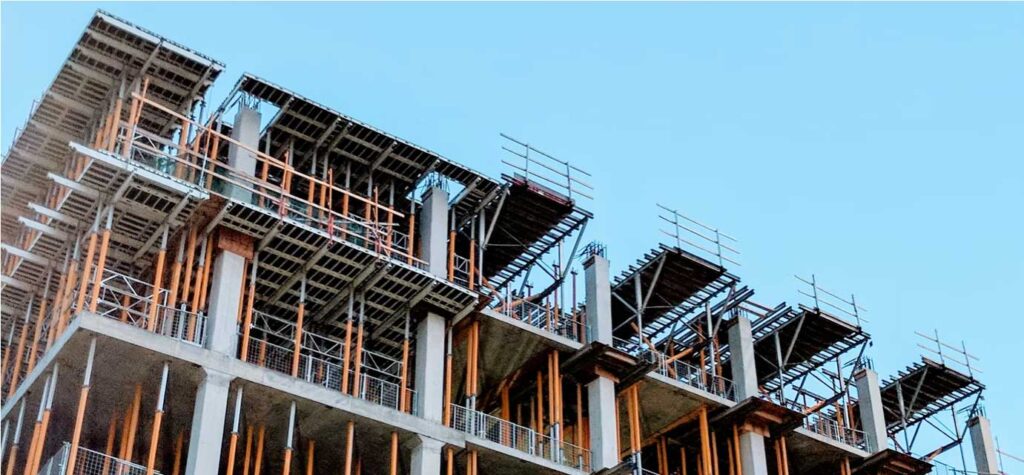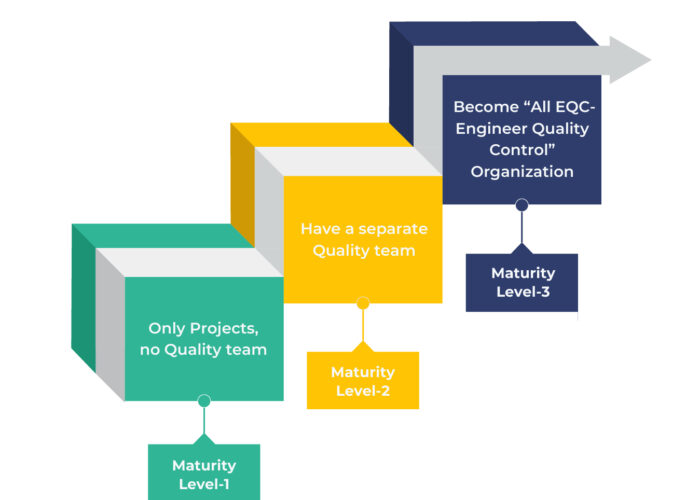
Creating an Organization geared towards Quality
(Part 2 of 3)
26 June 2023
In our previous post, we emphasized the importance of making Quality a central focus for success. Now, let’s talk about how you can align your entire organization towards this goal.
I’ll explain this better with an example – in sports, specialized coaches are assigned for different aspects of the game. In cricket, there are batting, bowling, fielding, and mental fitness coaches, all supervised by a head coach. Importantly, each aspect is given priority and receives dedicated attention.
The construction industry is no different. Each area has specialists overseeing it. Thus we have dedicated teams for Projects, Planning, Design, Procurement, etc. However, when it comes to Quality, there is still quite a distance to be covered. While a few companies have strong & mature Quality teams, many others don’t. After speaking with numerous successful builders and observing hundreds of construction sites, here are some best practices that we culled out:
Team Structure & Staffing
a) It is crucial to have dedicated quality control specialists both at Head office and at individual project sites
b) A well-staffed team is essential, since insufficient manpower makes it difficult for the team to make a significant impact. As a thumb rule, we have seen that for a project ranging from 2 to 5 Lakh square feet, a 2-4 member quality team is ideal. The team size can be adjusted based on the project’s scale
c) While staffing a QC team, a proven best practice is to include individuals who have prior experience of leading projects themselves, as they bring in practicality and a balanced approach to quality without making compromises. Project teams tend to be skeptical of folks with “only Quality” experience, but if the QC team has ex-Project Managers in it, they tend to see them as one of their own, and hence look up to them with respect,
Team Composition & Characteristics – Independence & Authority vs Responsibility
a) Independence – This is an important one. It is best if the QC team is allowed to operate independently and not made to report to Project or Operations. This independence ensures they have the teeth to take important decisions without undue interference. For instance, a person from the quality team should have the authority to halt construction at a site if they identify any quality issues.
But then, with great power also comes great responsibility. That’s why the QC team should play a balanced role.
b) Not just policemen, but guides / advisors – The job of the Quality team is not just to find faults with site execution. Instead, it’s best if they act as guides, working collaboratively with project teams to establish systems that enhance overall quality. Ultimately, their goal is to train & transform project engineers into becoming “EQCs” aka, quality control advocates themselves.
Quality Performance Measurement
a) Metrics – To achieve improvement, we need to measure quality performance & monitor it rigorously. And to do that, it’s essential to define tangible quality metrics. Here are some examples of metrics we’ve seen in use:
- First-time right (FTR) performance: When a QC team member visits an area at a project site for the first inspection, and finds absolutely no quality issues. Measuring the % of such FTR instances is a good metric
- Number of Revisits: Once a QC person has inspected a site and raised issues, how many times does he / she need to revisit the site before the issues get finally resolved?
- Average defects / snags per inspection: The number of issues identified during each quality control check. This can be measured for each work-area at the site, and then aggregated to any level. The beauty of this metric is that it can be used as an effective benchmark to compare different teams within a site, or even different sites. In fact, we’ve seen high level reviews at some of our clients, where the Senior management gets an idea of the company’s Quality performance by just evaluating the Average snags per inspection, compared across different sites.
b) Reviews – It is important to differentiate between quality reviews and normal project reviews. While a project review takes into account the progress of the work, a quality review focuses on whether quality standards have been met. In our experience, it’s best to keep these two reviews separate, as they need to be seen through different lenses and be given equal importance.
We strongly feel following the above pointers would help any construction company align its organization towards the goal of quality. However it’s equally important to understand that this change cannot happen overnight, rather it’s a journey. And in our experience, here is what this journey typically looks like
The journey from an “Only Projects” organisation to an “All EQC” organization
Maturity Level 1 – Only Projects, no Quality team
Maturity Level 2 – Have a separate Quality team
Maturity Level 3 – Become “All EQC- Engineer Quality Control” Organization

All the pointers on Quality Organization that we have laid out in this blog will hopefully help you navigate this journey from Level 1 to Level 3
Now, imagine what a Level 3 state would look like – every project staff member on your site is an EQC. They are trained to gauge quality at every step. And even better, they are also good project managers. Basically, you won’t have the need for a separate quality team because you have an All-EQC team.
In the next post, we will delve into the other 2 dimensions to achieve Quality focus – setting up effective processes & leveraging technology.
By Sashi Kiran, Founder, FalconBrick
Want to see how FalconBrick can transform your construction experience? Book a demo here

